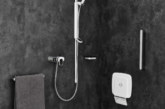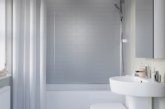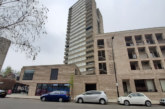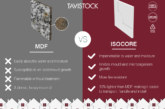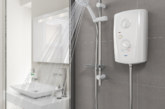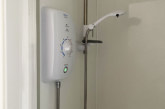The role of a social housing specifier is a balancing act — it can be challenging selecting the right bathroom products to meet both residents’ needs and budget requirements. Underpinning all that is safety — the most important element when creating a bathroom that’s fit for purpose. Craig Rendall, Specification Sales Director at Bristan, shares his insights on specifying safer showering for affordable housing.
Safety first
The safety of residents is a priority in social housing specification, so taking their needs into account is the first step in the process. The HSE has identified a number of groups who are more susceptible to scalding from hot water: children, older people, people with reduced mental capacity, mobility or temperature sensitivity, and people who cannot react appropriately or quickly enough to prevent injury.
Investing in showers with a thermostatic mixing valve (TMV) is a guaranteed way to ensure safety of residents. Thermostatic technology works by mixing the hot and cold water supply together to create a safer, more desirable temperature before it reaches the shower head. Plus, it has an automatic shut-off feature that prevents any unexpected hot or cold spikes, creating a smooth, safe showering experience for the user. Bristan, for example has a range of thermostatic showers to suit different needs and projects — from electric and bar showers to its newly updated OPAC TMV3 commercial shower range.
Bristan recently helped Sheffield City Council, which has one of the largest social housing portfolios in the UK, choose the right products to upgrade its bathroom specification. Safety was the council’s primary concern, following a scalding incident at one of its properties a few years ago. Bristan’s Joy Thermostatic 8.5kW electric shower was specified.
Andy Hill, the council’s Senior Housing Officer, says: “Sheffield City Council has a duty of care to its tenants and the Joy showers not only guarantee safer showering and the prevention of harm or injury from water that is too hot or too cold, but they’re also compliant with the Building Regulations (Part G), BEAB approved and WRAS approved for water use.”
Infection control
When assessing the risks within a bathroom, legionella is another consideration for social housing specifiers. The bacteria can build up and cause a potential harmful disease if the appropriate maintenance and servicing isn’t carried out, so choosing a product that makes anti-legionella routines simpler, is important.
The OPAC TMV3 commercial shower range features a patented built-in thermal flush mechanism. It is designed for easy infection control and supports anti-legionella regimes. Plus, filter change is incorporated into the elbows for easy cleaning and replacement. Also, TMV3 compliance means the showers offer high levels of protection against scalding from hot water.

Meeting deadlines
Ease of installation is an important consideration for social housing providers, especially on large-scale projects that have to be delivered in a specific timeframe. OPAC commercial showers feature adjustable elbows and have the ability to work at a very low pressure (0.2bar), allowing social housing specifiers to deliver more in less time.
Product maintenance and ongoing servicing is another important factor, for example, Bristan’s commercial shower range has added isolation integrated in the elbows to make maintenance quicker and easier, in addition to a front mounted one piece cartridge.
Flexibility
When designing safe showering environments, social housing providers must take into account the varying needs of residents, especially when creating accessible bathrooms. Choosing a supplier that offers flexibility across its ranges is vital for social housing specifications to ensure they can meet those varying requirements while staying within budget. Suppliers offering a broad range of showers with either exposed and concealed options, and handwheel or lever operated designs, such as Bristan for example, means specifiers have access to greater choice. Also, with products that can be flow limited to 8 litres/min, specifiers can look to save both water and money.


